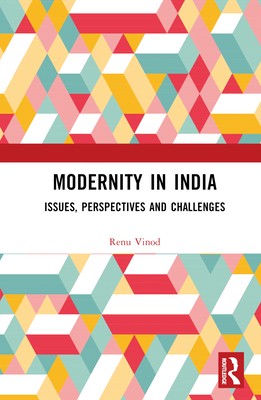
- We will send in 10–14 business days.
- Author: Renu Vinod
- Publisher: Routledge Chapman & Hall
- ISBN-10: 1032507993
- ISBN-13: 9781032507996
- Format: 15.6 x 23.4 x 1.6 cm, hardcover
- Language: English
- SAVE -10% with code: EXTRA
Reviews
Description
This book introduces a sociological understanding of the emergence of modernity in India and its ramifications on society, economy, and polity. It outlines the main features and context of modernity, as described in classical and later texts of modernity. The essays examine the transformation of Indian society as a consequence of the British colonial encounter resulting in social, economic, and political interventions. It also delineates the Indian context by defining the term community, and its close association with caste and religion, and subsequently examines the challenges in building a pan-Indian or national consciousness with a sense of 'we-ness' or common identity. Most importantly, the book also studies the politics of government formation after independence, and the role of dominant castes and classes in gaining power at the Centre. The book concludes with an outline of the definitions and historical practices of social exclusion in India, their contemporary configurations, the image of a socially, economically, and politically exclusive Indian modernity that poses challenges to the Indian state and civil society on account of the exclusion of multiple groups.
This book would be useful to the students, researchers and teachers of sociology, women and gender studies, history, economics, political science, and other interdisciplinary courses in social sciences. The book will also be valuable reading for those interested in South Asian studies, especially post-colonial contemporary Indian society.
EXTRA 10 % discount with code: EXTRA
The promotion ends in 17d.23:32:13
The discount code is valid when purchasing from 10 €. Discounts do not stack.
- Author: Renu Vinod
- Publisher: Routledge Chapman & Hall
- ISBN-10: 1032507993
- ISBN-13: 9781032507996
- Format: 15.6 x 23.4 x 1.6 cm, hardcover
- Language: English English
This book introduces a sociological understanding of the emergence of modernity in India and its ramifications on society, economy, and polity. It outlines the main features and context of modernity, as described in classical and later texts of modernity. The essays examine the transformation of Indian society as a consequence of the British colonial encounter resulting in social, economic, and political interventions. It also delineates the Indian context by defining the term community, and its close association with caste and religion, and subsequently examines the challenges in building a pan-Indian or national consciousness with a sense of 'we-ness' or common identity. Most importantly, the book also studies the politics of government formation after independence, and the role of dominant castes and classes in gaining power at the Centre. The book concludes with an outline of the definitions and historical practices of social exclusion in India, their contemporary configurations, the image of a socially, economically, and politically exclusive Indian modernity that poses challenges to the Indian state and civil society on account of the exclusion of multiple groups.
This book would be useful to the students, researchers and teachers of sociology, women and gender studies, history, economics, political science, and other interdisciplinary courses in social sciences. The book will also be valuable reading for those interested in South Asian studies, especially post-colonial contemporary Indian society.


Reviews